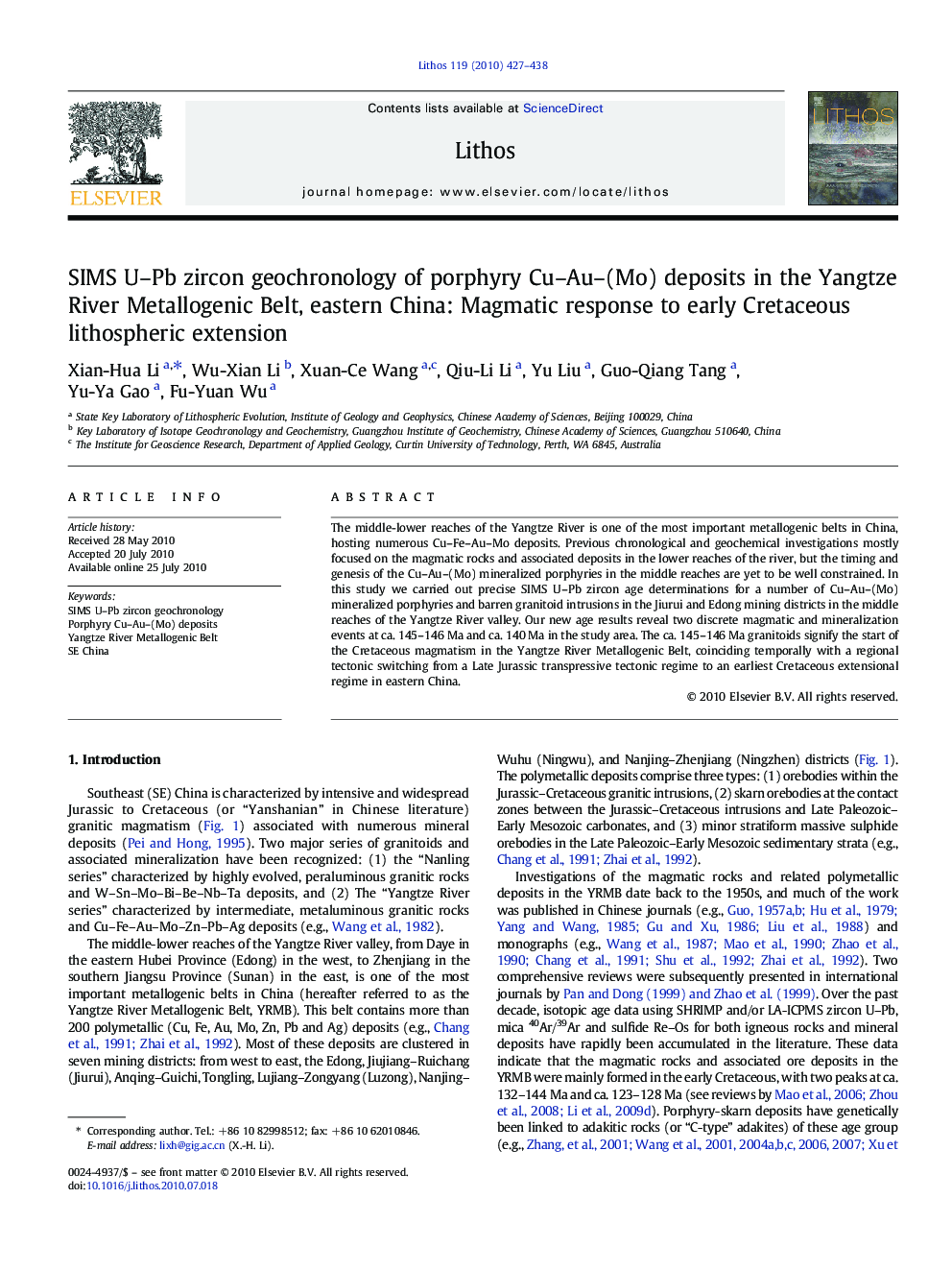| کد مقاله | کد نشریه | سال انتشار | مقاله انگلیسی | نسخه تمام متن |
|---|---|---|---|---|
| 4716884 | 1638728 | 2010 | 12 صفحه PDF | دانلود رایگان |

The middle-lower reaches of the Yangtze River is one of the most important metallogenic belts in China, hosting numerous Cu–Fe–Au–Mo deposits. Previous chronological and geochemical investigations mostly focused on the magmatic rocks and associated deposits in the lower reaches of the river, but the timing and genesis of the Cu–Au–(Mo) mineralized porphyries in the middle reaches are yet to be well constrained. In this study we carried out precise SIMS U–Pb zircon age determinations for a number of Cu–Au–(Mo) mineralized porphyries and barren granitoid intrusions in the Jiurui and Edong mining districts in the middle reaches of the Yangtze River valley. Our new age results reveal two discrete magmatic and mineralization events at ca. 145–146 Ma and ca. 140 Ma in the study area. The ca. 145–146 Ma granitoids signify the start of the Cretaceous magmatism in the Yangtze River Metallogenic Belt, coinciding temporally with a regional tectonic switching from a Late Jurassic transpressive tectonic regime to an earliest Cretaceous extensional regime in eastern China.
Research Highlights
► The Cu–Au–(Mo) mineralized porphyries and barren granitoids in the Jiurui and Edong mining districts in Yangtze River Metallogenic Belt were precisely dated at ca. 145–146 Ma and ca. 140 Ma.
► The ca. 145–146 Ma mineralized porphyries and barren granitoids signify the initiation of the Cretaceous magmatism in the Yangtze River Metallogenic Belt.
► These igneous rocks are most likely generated in response to the regional tectonic switch from the Late Jurassic transpressive to earliest Cretaceous extensional regimes.
Journal: Lithos - Volume 119, Issues 3–4, October 2010, Pages 427–438